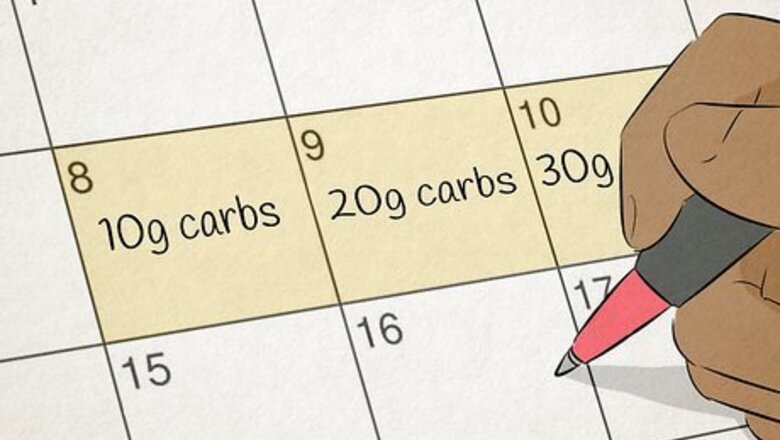
views
Reintroducing Carbs Gradually
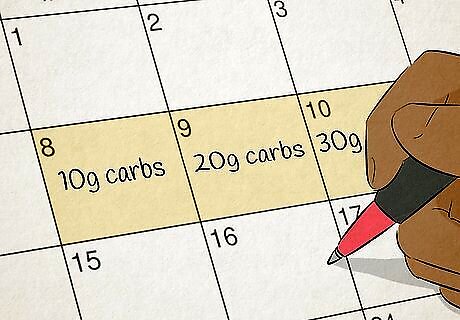
Add carbs slowly over a period of at least 2 weeks. One strategy, for instance, is to increase your carb intake by 10 grams (0.35 oz) each day until you reach the level your doctor or dietician advises. Alternatively, you might increase your carb intake by 1 serving portion per day for the first week, then 2 serving portions per day the second week. Your dietician can help you determine your carb serving portions. After retraining your body to function with minimal carb intake, you have to retrain it to function with carbs once again. Expect this process to take a minimum of 2 weeks, and possibly 4 weeks or more.
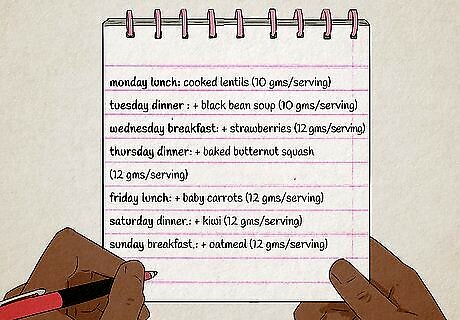
Create a meal plan to help you reintroduce carbs at the proper pace. It’s much easier to add 10 grams (0.35 oz) of carbs per day, for example, if you have a plan in place. Instead of adding carbs haphazardly, write down weekly meal plans as you transition from keto, adding foods like the following in sequence to your meals: Monday: cooked lentils (10 carb grams per serving) added to your salad at lunch. Tuesday: plus black bean soup (10 carb grams per serving) at dinner. Wednesday: plus strawberries (12 carb grams per serving) at breakfast. Thursday: plus baked butternut squash (11 carb grams per serving) at dinner. Friday: plus baby carrots (12 carb grams per serving) at lunch. Saturday: plus kiwi (12 carb grams per serving) at dinner. Sunday: plus oatmeal (14 carb grams per serving) at breakfast. If you need help formulating a meal plan, work with your dietician.
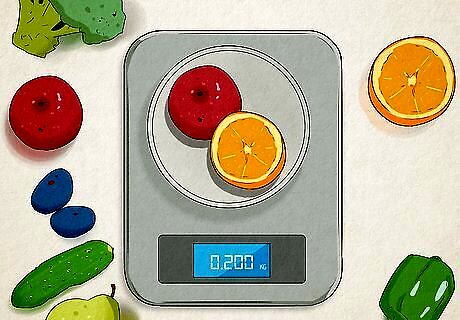
Measure your food intake to keep it steady while adding carbs. You likely became skilled at measuring your food intake while on keto, perhaps even by using a scale to weigh your portions. Keep up this close observation of how much you’re eating as you reintroduce carbs so that you don’t start eating more overall than you did on keto. Otherwise, adding carbs may simply increase your calorie intake and, in turn, your post-keto weight gain. Don’t, for example, simply add a baked potato or a side of pasta to the same serving size of steak you ate while on keto. Instead, reduce your protein (steak) portion when you add the carb (pasta) portion to your meal. Use nutrition labels, web- or app-based calorie trackers, a food diary, or perhaps your trusty kitchen scale to keep a close eye on how much you’re eating. Portion sizes can be difficult to visualize properly, although using your fingers, palm, and fist as size comparisons may help.

Avoid added sugars and foods with high natural sugar content. If sugary drinks and packaged sweets were regular parts of your diet pre-keto, resist the urge to return to them post-keto. It’s especially important to avoid foods and drinks with added sugars during your transition, since they are calorie-rich, nutrient-poor “carb bombs” that will increase your initial weight gain. Nutrition labeling has gotten better in recent years, so you can often see if a particular food contains added sugars. Whenever possible, avoid foods that have more than 4 grams (0.14 oz) of added sugars per serving. While foods with naturally elevated sugar content aren’t typically as significant of a problem, try to steer clear of high-sugar foods like honey and dates during your transition off keto. Work with your dietician to get help identifying added sugars and high-sugar foods.
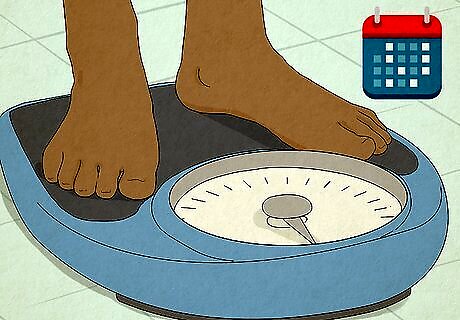
Weigh yourself every 1-3 days to track your transition off keto. A daily weigh-in is fine so long as it doesn’t cause you undue stress or anxiety. Otherwise, weighing in as little as twice per week is okay during your transition. Keep in mind that the goal is to check for overall patterns, not to treat any minor weight gain as a major problem. If you gain fewer than 5 lb (2.3 kg) during the first 1-2 weeks of your transition, consider it a success. Some amount of weight gain is practically inevitable when you reintroduce carbs. Frequent weigh-ins will help you identify a more significant weight gain pattern earlier, so that you can more quickly identify and rectify the issue(s) causing it.
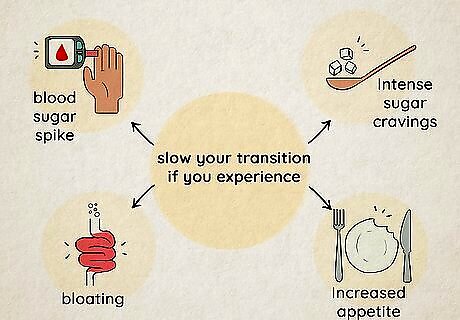
Slow your transition if you experience bothersome symptoms. Some people can transition off keto in a week, while for others it may take a month. Listen to your body and don’t rush the process. If you experience any of the symptoms listed below, try reducing the speed of your transition by half. If the symptoms continue or worsen, contact your doctor for guidance. Symptoms can include: Bloating and constipation. Blood sugar spikes, which may cause episodes of irritability and/or fatigue. Increased overall appetite. Intense sugar cravings.
Managing Your Strategy and Expectations

Choose to exit keto when the time is right for you. Experts still disagree about the effectiveness and overall safety of keto diets, but most of them seem to agree that it shouldn’t be a permanent dietary change. When you start keto, have a healthy, realistic goal in mind—typically a weight-loss goal—and plan to transition away from keto once you reach your goal. Alternatively, if your body simply won’t adjust to a keto diet—for instance, you can’t shake the symptoms of the “keto flu”—take it as a sign that you should begin planning your keto exit. For the best results, consult with your doctor before starting keto to make sure it’s a good choice for you, and then consult with them again to determine how best to transition off your keto diet. The goal of keto is to achieve ketosis—the point at which your body burns your fat stores for energy due to the lack of carbohydrates. While this may lead to weight loss, it’s not typically advised as a long-term strategy.
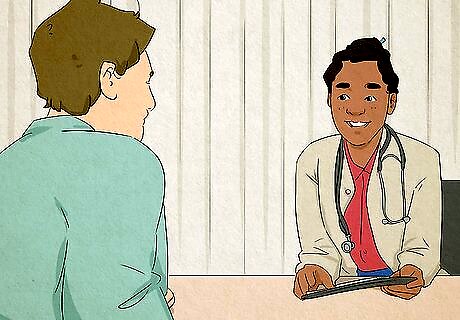
Treat the transition as a holistic process, just like starting keto. Starting a successful keto diet doesn’t happen on a whim. Instead, it requires preparation, focus, and dedication as you make major lifestyle changes, and it's much more manageable when you have a strong support network. The same is true when the time comes to transition off your keto diet. If you didn’t say “I think I’ll start keto tomorrow” out of the blue, don’t say “I think I’ll quit keto tomorrow” without planning it out. Your support network might include your doctor, dietician, family, friends, co-workers, and others who offer encouragement and sound advice.
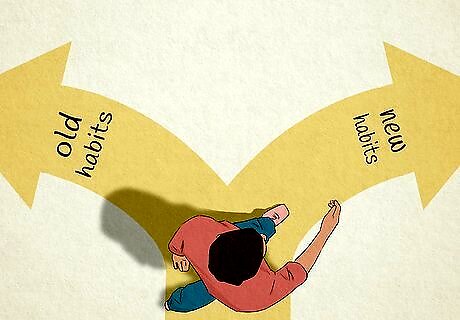
Reject the urge to resume your old habits post-keto. Treat keto as the first step of a permanent dietary and lifestyle change. To maintain any weight loss or health gains you achieve while doing keto, you must follow it up with a balanced, healthy diet and lifestyle plan. Otherwise, your keto gains will quickly be lost. In other words, don’t treat keto as a dietary “vacation” that you’ll follow up by going “back home” to your familiar ways.

Consult with a dietician to plan your new eating habits. Starting keto means learning a new diet and a new way to relate to food. Ending keto and transitioning into your long-term, balanced diet requires even more of the same. Even if you did manage to successfully go on keto without a dietician’s help, strongly consider consulting with one as you prepare to go off keto. Work with a registered dietician who, if possible, has experience working with patients who’ve used keto diets. Your primary care doctor may be able to give you some nutrition recommendations; however, when it comes to nutrition, registered dietitians are experts in this field.

Stick to the exercise program you were doing while on keto. Hopefully, your keto diet included either starting or maintaining a healthy and individually-appropriate exercise regimen. If so, it’s important that you continue with this exercise program as you transition to your post-keto diet. Remember that going off keto doesn’t mean going off exercise! No matter your dietary plan, regular, balanced exercise is essential to both weight management and overall health. If your keto diet didn’t include an exercise program, work with your doctor and a physical therapist or personal trainer to develop an appropriate regimen for you.

Expect a small initial weight gain as part of your transition. Due to the water content in carbohydrates, it is practically inevitable that you’ll gain some weight early in your transition from a keto diet. So long as you transition slowly, maintain healthy eating habits, don’t increase your overall calorie intake, and maintain your exercise program, however, this water weight gain should be temporary. If your weight plateaus at a slightly higher number than what you achieved on keto, your best bet is to accept this as your target off-keto weight. If your weight continues to climb after the first 1-2 weeks, talk to your doctor and dietician about potential adjustments in your strategy.




















Comments
0 comment